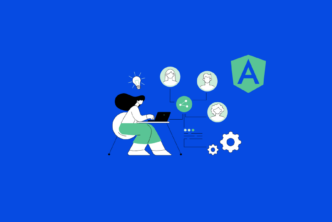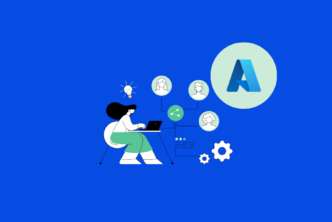When it comes to systems programming or performance-critical applications, C remains one of the most trusted languages in the industry. Its close-to-the-metal approach allows developers to write highly efficient and precise code, making C expertise a valuable asset. Companies are constantly on the lookout for hiring C developers who not only understand C syntax but can leverage its power to solve real-world problems efficiently.
In this guide, we’ve compiled a list of 10 in-depth C programming interview questions based on our experience and AI-driven analysis of what sets top C developers apart. These questions dig into areas like memory management, pointers, debugging techniques, and optimizing code for performance. Alongside each question, you’ll find two follow-up questions to help you explore a candidate’s problem-solving skills and technical depth.
Whether you’re building embedded systems, developing performance-critical software, or optimizing legacy codebases, these questions will give you the tools to find a developer with the skill and mindset to tackle the most challenging aspects of C programming.
Table of Contents
1: How do you manage memory allocation in C, and what strategies do you use to prevent memory leaks?
Expected Answer: In C, I use malloc, calloc, realloc, and free for dynamic memory allocation and deallocation. I always ensure that every dynamically allocated memory block is freed after its use. I also use tools like Valgrind to detect memory leaks and double-check that all pointers are properly managed to prevent dangling pointers.
Explanation: Proper memory management is crucial in C since the language doesn’t provide automatic garbage collection. Handling memory efficiently prevents memory leaks and optimizes the application’s performance.
1.1: What are the differences between malloc and calloc, and when would you choose one over the other?
Expected Answer: malloc allocates a specified amount of memory but does not initialize it, whereas calloc allocates memory and initializes all bits to zero. I use calloc when I need the memory to be zeroed out to prevent unpredictable behavior.
Explanation: Understanding these differences helps in choosing the most suitable memory allocation method depending on the requirements of the program.
1.2: How do you handle reallocating memory in C to avoid fragmentation issues?
Expected Answer: I use realloc to resize memory blocks, making sure to always check if the operation is successful. If there is a possibility of memory fragmentation, I design my program to handle data in a way that minimizes frequent reallocation.
Explanation: Efficient memory reallocation helps in reducing fragmentation, which can significantly improve the program’s memory usage over time.
2: What are pointers in C, and how do you use them effectively to manipulate data structures?
Expected Answer: Pointers are variables that store memory addresses of other variables. I use pointers to manipulate arrays, structures, and dynamically allocated memory. They allow me to efficiently manage memory and perform operations like pointer arithmetic for quick data access.
Explanation: Pointers are a fundamental concept in C, providing powerful ways to work with memory directly, which can lead to highly optimized code.
2.1: How do you handle pointer arithmetic, and what precautions do you take to avoid errors?
Expected Answer: I handle pointer arithmetic by considering the data type size. For example, incrementing a pointer increases its address by the size of the data type it points to. I always ensure that my pointer operations stay within valid memory boundaries to avoid segmentation faults.
Explanation: Understanding pointer arithmetic is essential for accessing and manipulating memory safely, which helps in writing efficient and error-free code.
2.2: Can you explain the concept of a double pointer and how it’s used in multi-level data structures?
Expected Answer: A double pointer, or a pointer to a pointer, is used to store the address of another pointer. It’s commonly used in scenarios like dynamic memory allocation for multi-dimensional arrays or passing a pointer to a function so that changes affect the original pointer.
Explanation: Double pointers are critical in handling complex data structures and performing operations that involve changing the values stored in pointers.
3: What are the key differences between stack and heap memory in C?
Expected Answer: Stack memory is used for static memory allocation and local variables within functions, while heap memory is used for dynamic memory allocation. Stack memory is automatically managed and has size limits, whereas heap memory needs to be manually allocated and freed using malloc and free.
Explanation: Understanding the difference between stack and heap memory is essential for efficient memory management and avoiding common issues like stack overflows or memory leaks.
3.1: How do you handle stack overflow situations in recursive functions?
Expected Answer: I optimize recursive functions by limiting recursion depth, using tail recursion where possible, or converting the recursion into an iterative approach to prevent stack overflow.
Explanation: Preventing stack overflow is important for ensuring that the program runs smoothly, especially when dealing with deeply nested recursive functions.
3.2: What techniques do you use to minimize fragmentation in heap memory?
Expected Answer: I minimize heap fragmentation by allocating memory blocks of uniform size, releasing unused memory promptly, and using memory pools for frequently used memory sizes. I also defragment the heap when possible.
Explanation: Managing heap fragmentation effectively helps maintain optimal memory usage and program performance.
4: How do you handle file operations in C, and what functions do you typically use?
Expected Answer: I use functions like fopen, fclose, fread, fwrite, fprintf, and fscanf for handling file operations in C. I ensure that the file pointer is properly checked after opening a file to handle any errors gracefully.
Explanation: File handling is a critical aspect of C programming, allowing interaction with the file system for reading, writing, and managing data.
4.1: What strategies do you use to handle file errors in C?
Expected Answer: I check the file pointer after opening the file, use error codes like NULL for file open failures, and implement error handling logic to provide informative messages to users and handle retries or alternative paths.
Explanation: Proper error handling ensures that the program remains stable even when file operations fail due to unexpected conditions.
4.2: How do you ensure data integrity when performing concurrent file operations?
Expected Answer: I use file locking mechanisms to prevent data corruption during concurrent file access. Techniques like flock or atomic file operations help ensure that file writes do not overlap and cause inconsistencies.
Explanation: Maintaining data integrity during file operations is crucial in multi-threaded applications where multiple processes might attempt to access the same file simultaneously.
5: How do you optimize C code for performance, especially in computationally intensive tasks?
Expected Answer: I focus on minimizing loops, using efficient algorithms, and optimizing data structures to reduce execution time. I also utilize compiler optimizations, inline functions, and avoid redundant calculations to streamline performance.
Explanation: Code optimization is critical in C to achieve faster execution, which is especially important in performance-sensitive applications.
5.1: How do you leverage the use of bitwise operations for performance improvements in C?
Expected Answer: I use bitwise operations to perform fast calculations, especially in low-level programming tasks. Operations like shifts, masks, and bit manipulation are much quicker than their arithmetic counterparts, enhancing performance.
Explanation: Bitwise operations allow for efficient data processing at the binary level, significantly speeding up computational tasks.
5.2: What are some common pitfalls to avoid when optimizing code in C?
Expected Answer: Avoid premature optimization that makes code unreadable, don’t sacrifice code clarity for minor speed gains, and always profile the code to identify bottlenecks before making optimizations.
Explanation: Knowing when and where to optimize ensures that performance improvements do not come at the cost of code maintainability.
6: What is the role of volatile keyword in C, and when should it be used?
Expected Answer: The volatile keyword tells the compiler that a variable’s value can change at any time without the program’s knowledge, such as in hardware registers or multi-threaded applications. It prevents the compiler from optimizing the code in a way that could lead to incorrect behavior.
Explanation: Using the volatile keyword correctly is crucial in embedded and multi-threaded programming to ensure data integrity.
6.1: How does the use of volatile affect compiler optimizations?
Expected Answer: It disables certain compiler optimizations on the variable, forcing the compiler to load the variable’s value from memory each time it’s accessed to ensure it reflects the most recent value.
Explanation: This ensures that the program’s behavior is correct, especially when dealing with variables that may change outside the program’s control.
6.2: In what scenarios is it inappropriate to use the volatile keyword?
Expected Answer: It should not be used as a substitute for proper synchronization techniques in multi-threaded environments. It does not guarantee atomic access or thread safety, and improper use can lead to race conditions.
Explanation: Misuse of the volatile keyword can lead to subtle bugs and unpredictable program behavior.
7: How do you handle concurrency and multi-threading in C programs?
Expected Answer: I use POSIX threads (pthreads) for multi-threading in C, employing mutexes, semaphores, and condition variables to manage synchronization between threads. I also handle race conditions by carefully coordinating shared resource access.
Explanation: Effective multi-threading and synchronization are key to building scalable and high-performance applications in C.
7.1: How do you prevent deadlocks in multi-threaded C programs?
Expected Answer: I avoid deadlocks by enforcing a strict lock acquisition order, using timeout mechanisms, and minimizing the time locks are held. Deadlock detection techniques can also be employed to recover from such situations.
Explanation: Preventing deadlocks ensures that multi-threaded applications run smoothly without getting stuck due to resource contention.
7.2: What are some strategies to optimize thread performance in C?
Expected Answer: I use thread pooling, reduce thread creation overhead, and distribute workload evenly across threads. I also use lightweight synchronization techniques to reduce contention and improve performance.
Explanation: Optimizing thread performance is essential for achieving efficient parallel processing in computationally intensive applications.
8: What are the differences between static and dynamic linking in C?
Expected Answer: Static linking includes all the library code in the executable at compile time, resulting in a larger file size. Dynamic linking loads the library code at runtime, which keeps the executable size smaller and allows for shared libraries to be updated without recompiling the application.
Explanation: Understanding the trade-offs between static and dynamic linking is crucial for managing application performance, memory usage, and update flexibility.
8.1: What are the advantages of using dynamic linking in large-scale applications?
Expected Answer: Dynamic linking reduces memory footprint by allowing multiple programs to share a single library in memory. It also simplifies updates, as changes to the library do not require recompilation of the entire application.
Explanation: Dynamic linking improves the flexibility and scalability of applications by facilitating easier updates and memory optimization.
8.2: How do you handle version compatibility issues with dynamically linked libraries?
Expected Answer: I use versioning conventions in the library names and ensure backward compatibility through well-defined APIs. Dependency management tools can also help to control and track library versions used by different applications.
Explanation: Proper version control in dynamic libraries is crucial to prevent compatibility issues and application crashes.
9: How do you debug C programs, and what tools do you use to identify issues?
Expected Answer: I use debugging tools like GDB (GNU Debugger) to step through code, analyze variables, and identify issues. I also use Valgrind for detecting memory leaks and profiling tools like gprof to analyze performance bottlenecks.
Explanation: Debugging and profiling tools are essential in efficiently identifying and fixing issues in C programs, ensuring that the code runs correctly and optimally.
9.1: What is your approach to handling segmentation faults in C?
Expected Answer: I use GDB to trace back the call stack and find the exact location of the fault. I check for issues like null pointer dereferencing, invalid memory access, and buffer overflows that typically cause segmentation faults.
Explanation: Proper handling of segmentation faults helps in stabilizing the program and improving its robustness against unexpected crashes.
9.2: How do you ensure that memory access patterns are optimized for performance?
Expected Answer: I focus on data locality, structure padding, and alignment to optimize memory access patterns. I use cache-friendly algorithms to reduce memory latency and improve performance.
Explanation: Optimizing memory access patterns leads to faster execution times and more efficient use of CPU caches.
10: How do you manage code modularity and reusability in C projects?
Expected Answer: I organize code into separate header files (.h) and implementation files (.c), clearly defining each module’s interface. I use consistent naming conventions, avoid global variables, and make use of macros for reusable code.
Explanation: Modular code design improves maintainability, readability, and ease of debugging, making the codebase scalable and easier to manage.
10.1: What are the best practices for using header files in C to ensure code organization?
Expected Answer: I include guards or #pragma once in header files to prevent multiple inclusions. I only declare function prototypes and data types in headers, separating them from the implementation code to maintain clear modular boundaries.
Explanation: Proper use of header files ensures that code remains organized, modular, and free from circular dependencies.
10.2: How do you handle dependencies between modules in large C projects?
Expected Answer: I minimize dependencies by designing modules to be as independent as possible, using abstraction layers and interfaces. I also make use of build tools like Makefiles to manage dependencies efficiently.
Explanation: Managing module dependencies is crucial for maintaining the scalability and flexibility of large-scale C projects.
Final Thoughts
Interviewing for C programming expertise goes beyond checking a candidate’s familiarity with syntax; it’s about finding someone who understands the intricacies of low-level programming and can think critically to optimize code. The questions we shared aim to uncover a candidate’s deep understanding of memory management, debugging strategies, and their ability to work efficiently with system resources.
Remember, the best C developers don’t just write code; they write code that’s clean, efficient, and scalable. As you conduct your interviews, focus on how well the candidate can navigate complex problems, think logically, and adapt their solutions to fit the unique needs of your project.
If you’re looking to refine your interview process further, consider using AI tools that help customize your questions based on your specific requirements. This approach will help you streamline the vetting process and focus on finding a developer who not only fits technically but also aligns with your project’s goals and vision. Good luck with your interviews, and here’s to finding the C expert who can take your software development to the next level!




